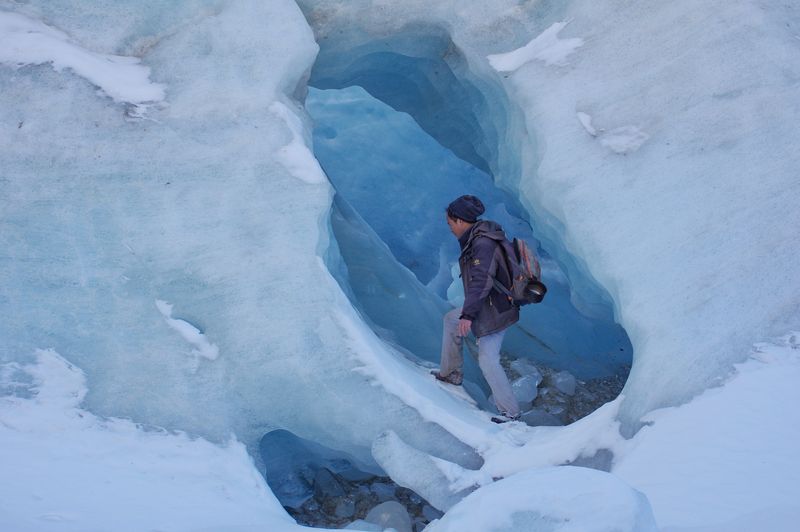
Wang Xiangjun explores a glacier in Bomi County, Tibet Autonomous Region, southwest China. (Photo provided to Xinhua)
Follow Wang Xiangjun and take a closer look at the magnificent glaciers, some of which are disappearing because of climate change.
CHENGDU, April 14 (Xinhua) -- Wang Xiangjun moved bricks at construction sites, cleaned factory floors and carried trays in restaurants. But the most unique experience for the migrant worker was recording melting glaciers with cellphones.
In the past decade, Wang has climbed more than 70 glaciers and recorded how they melted or simply disappeared, in an attempt to raise public awareness of climate change.
His efforts even allowed him to be part of the UN Climate Change Conference held in Madrid a few months ago.
"I heard they wanted to decrease carbon dioxide, which is a good thing because it will help prolong the life of glaciers," he said.
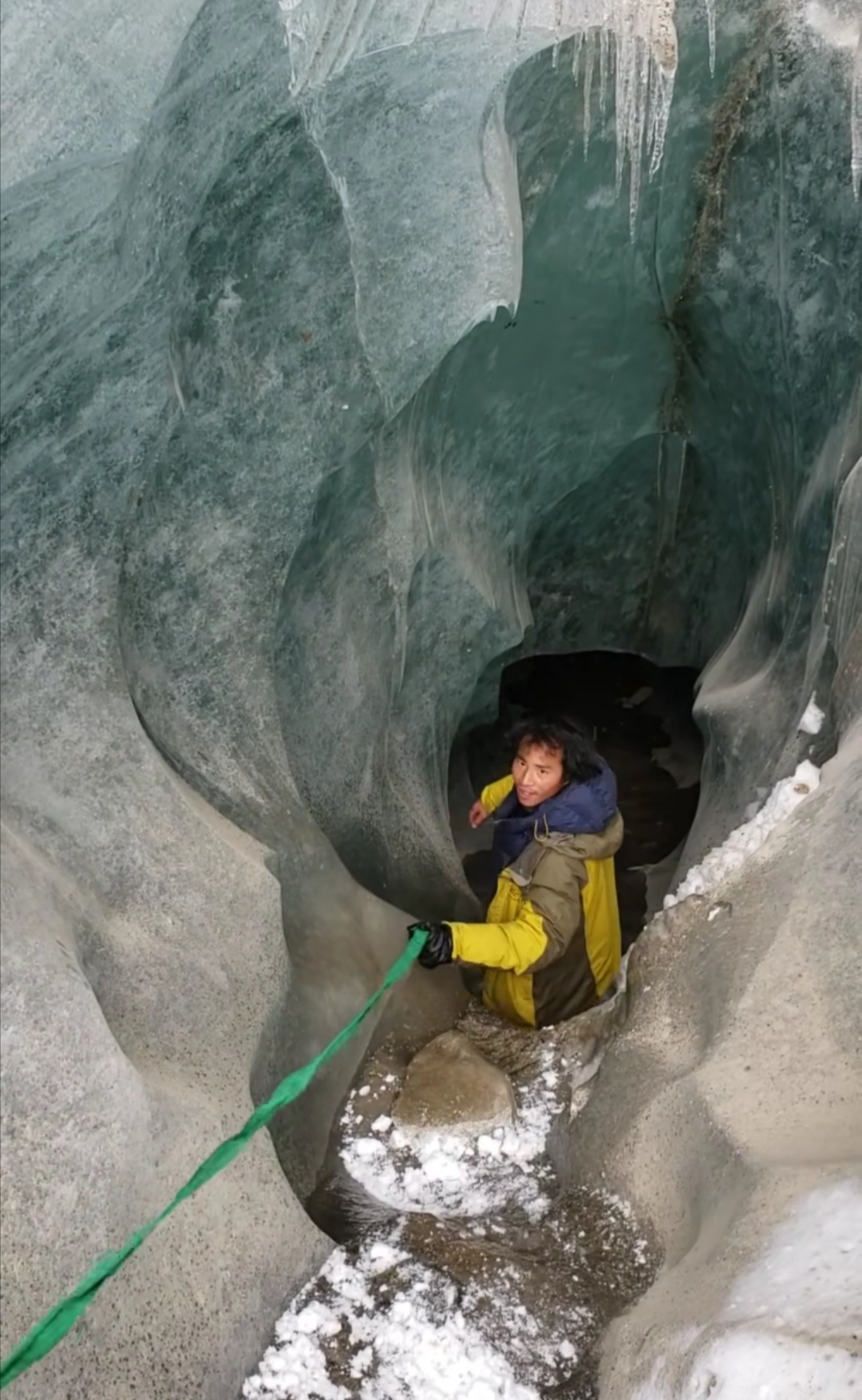
Wang gets inside a glacier (Photo provided to Xinhua)
MIGRANT WORKER AT LOSS
Wang was born into a farmers' family in the county of Linshui, southwest China's Sichuan Province. His parents spent their lives toiling in the fields but did not make much money.
After a lackluster performance in the national college entrance exam, Wang left his hometown to search for a job as a migrant worker.
"I did not know what to do at that time," he said. "I was at a loss."
While cleaning factory floors in Shenzhen, in the southern Guangdong Province, he found the job boring.
"I started doing different jobs across the country while traveling," he said. "I wanted to broaden my horizon."
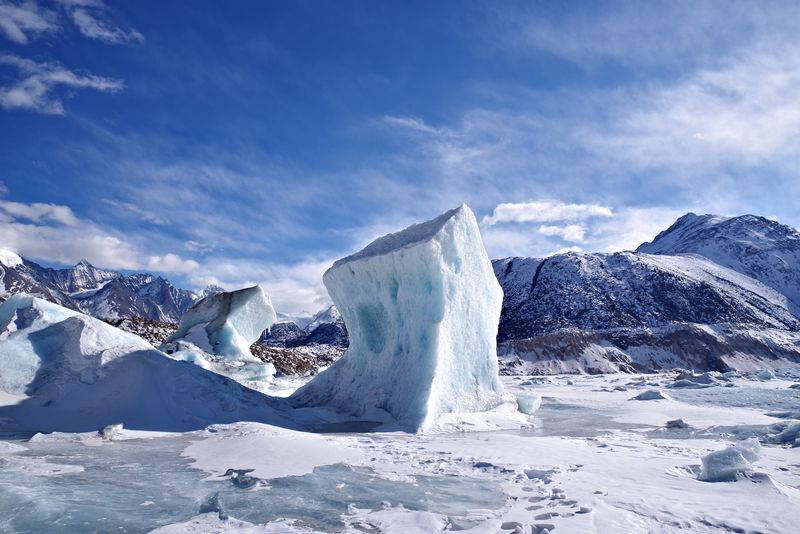
Photo taken by Wang Xiangjun shows the Laigu Glacier in Baxoi County, Tibet Autonomous Region, southwest China. (Photo provided to Xinhua)
NAVIGATING ICY WATERS TOWARDS GLACIERS
Wang's passion for glaciers came quite accidentally. While working in Lijiang, southwest China's Yunnan Province, he saw a tourism advertisement for the snow-capped Yulong Mountain on a bus.
"I did not see much snow when I was growing up, so I was fascinated," he said. "I wanted to take a good look."
In the tourist attraction, Wang found the ticket price for the cable cars was too high and chose to walk eight hours to a glacier about 4,500 meters above sea level. It was a rainy day, and the mountain was misty.
"The moment I saw the glacier, I was in shock and awe of its beauty," he said.
Since then, Wang embarked on an epic journey to search for glaciers and record them in videos.
Glaciers cover about 50,000 square kilometers in China, mostly in the autonomous regions of Tibet and Xinjiang.
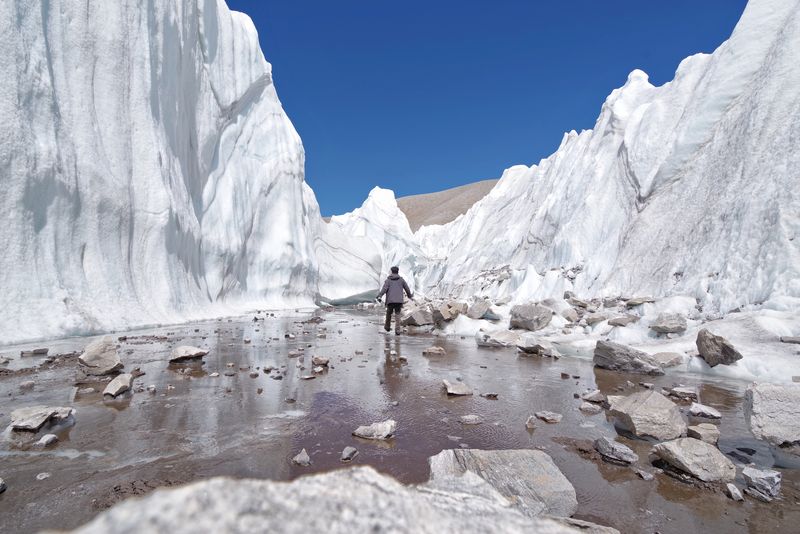
Wang Xiangjun explores a glacier in Kangmar County, Tibet Autonomous Region, southwest China. (Photo provided to Xinhua)
Wang said climbing the glaciers is easier than climbing mountains because it is easy to find directions without plants standing in the way.
"In Tibetan areas, locals have the tradition of herding and digging caterpillar fungi, so I often find small wood cabins on the way, where I can warm myself up," he said. "It is safer than tents."
But glaciers can also be dangerous. In areas 5,000 meters above sea level where few people set their foot, wild animals pose potential threats. Avalanches, falling rocks and crumbling glaciers could all be deadly.
"I once encountered a group of howling wolves when I was on route to a glacier in Tibet," he recalled. "I hid in the cabin and saw more than 10 wolves outside through the cracks of the door. I was terrified!"
There was no one around, and his cellphone had no signal.
"I heard that wolves were scared of fire, so I kept burning firewood and crept into the sleeping bag, shaking," he said.
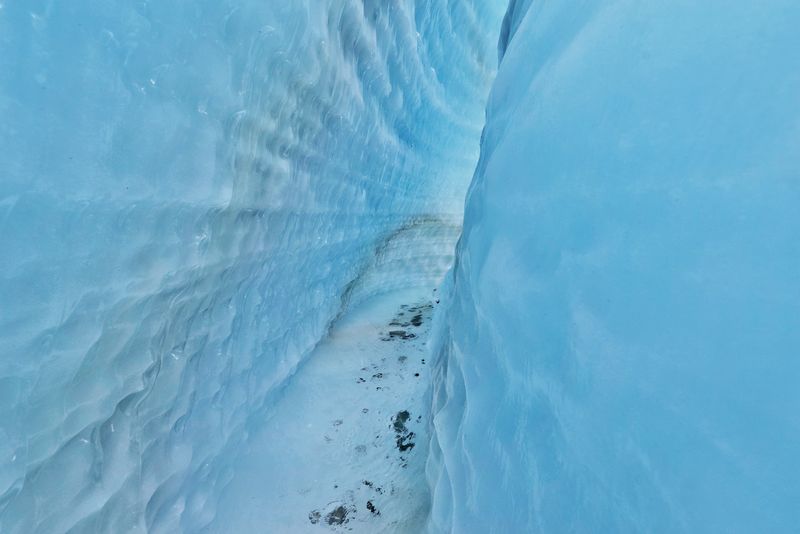
Photo taken by Wang Xiangjun shows an interior view of a glacier in Kangmar County, Tibet Autonomous Region, southwest China. (Photo provided to Xinhua)
Despite all the challenges, the charm of glaciers is beyond description in Wang's eyes.
"I have seen blue and black glaciers," he said. "The blue ones have been in form for hundreds or even thousands of years and are extremely crystal, while the black ones contain rocks, sand and earth, mostly from the mountains surrounding the glaciers."
They also have different formations, with some looking like tunnels, caves, cliffs and even pagodas.
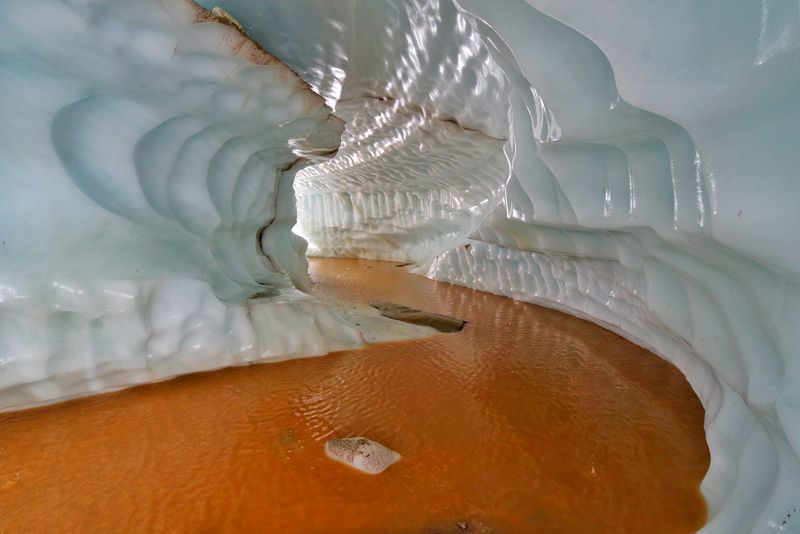
Photo taken by Wang Xiangjun shows an underground river inside a glacier in Kangmar County, Tibet Autonomous Region, southwest China. (Photo provided to Xinhua)
MELTING GLACIERS
Wang usually chooses his destination glaciers on his mobile phone. He uses a GPS to identify vast, white areas on the map and goes to visit those that seem to have large chunks of ice.
"But I often found the glaciers had already melted into small pieces of ice because the satellite images were usually taken a few years ago," he said.
"Almost all the glaciers I visited looked different from the images on my phone," he said. "You need to stand in front of the glaciers to realize how fast they are melting."
Some glaciers turned into small ones, some became lakes, but many start crumbling from the inside, he said.
"The sun melts a glacier's surface first, and water sinks into the bottom," he said. "As more water accumulates into a river, the glacier begins to lose balance and crumble."
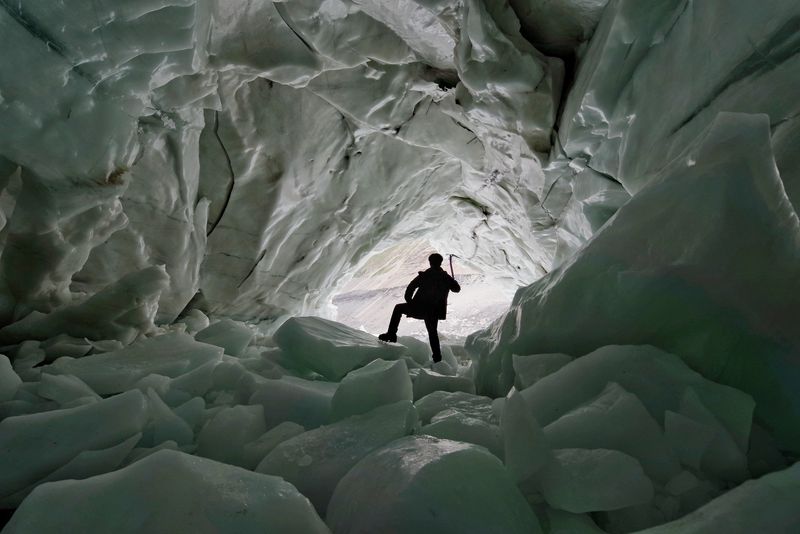
Wang Xiangjun explores a glacier in Nagarze County, Tibet Autonomous Region, southwest China. (Photo provided to Xinhua)
According to a report jointly released by the Chinese Academy of Social Sciences and the China Meteorological Administration, global sea levels reached a new high in 2018 as the temperature rose. The report said that China's glacier mass could decrease by almost 70 percent by the end of the 21st century in worst-case scenarios.
In December last year, Wang took his glacier videos and stories to Madrid for the climate change conference as one of China's environmentalists.
"For many people, the melting glaciers seem a little distant from their lives," he said. "I hope that through my videos and stories, people could see climate change is taking place." ■



